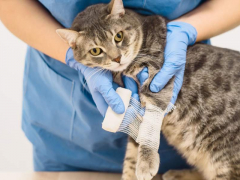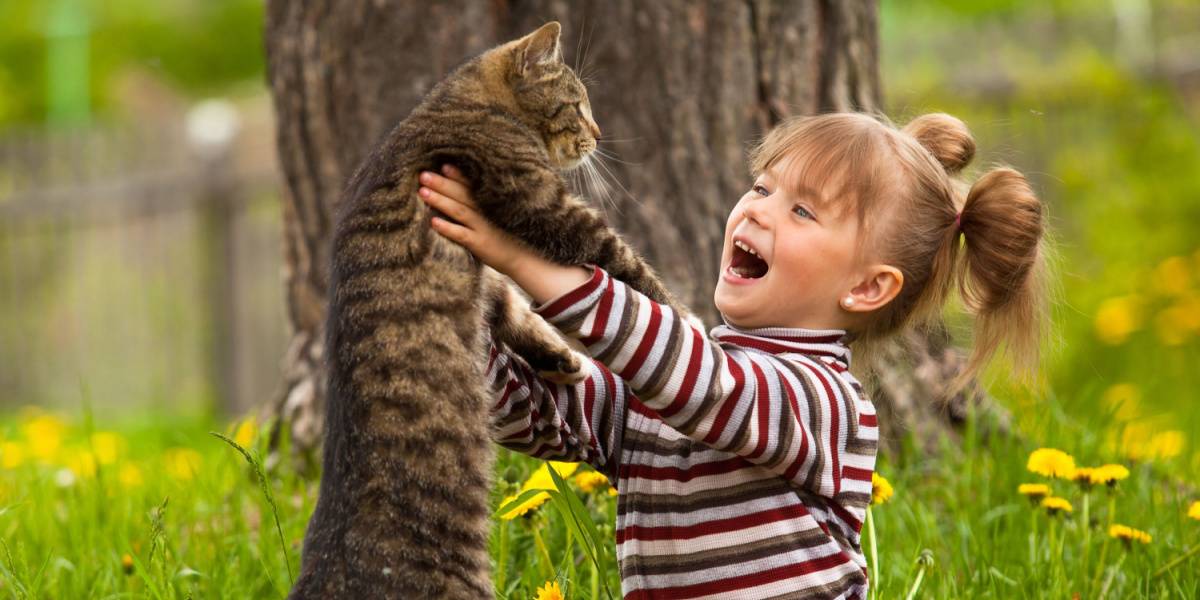
We all want our cats to like us, but cats are not always as outwardly affectionate as dogs are. It’s a privilege when they come to us for a stroke or cuddle, so how do we make this happen more often? And how can you get your cat’s attention without scaring them off? Read on to learn a few ways to get your cat’s attention and encourage them to interact with you more often.
1. Be Calm and Relaxed
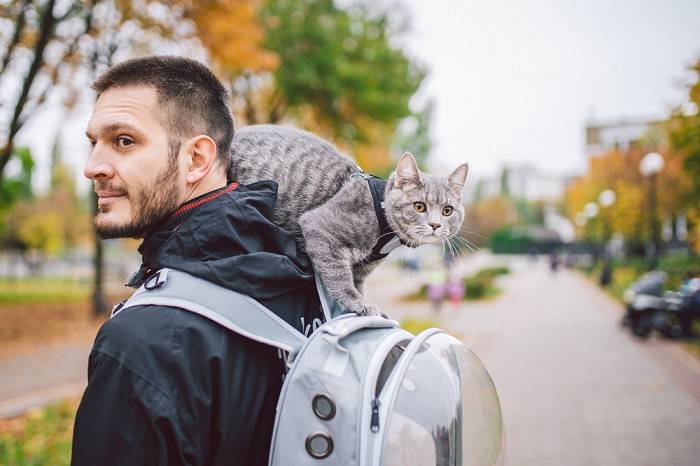
Many cats prefer to interact with people who don’t overwhelm them with too much physical touch or loud talking.
Have you ever noticed how cats are attracted to people that don’t like them? Well, this is due in part to the fact that cats prefer people who are calm and relaxed. If a person ignores a cat, the cat is more likely to offer themself up for attention because they interpret the human’s behavior as them being a calm and safe person to hang out with.
Cats have highly developed senses and all of these senses help them to pick up on your subtle body language and they can quickly decide what sort of mood you’re in. In other words, your cat can read you like a book! Your cat is far more likely to come to you if you are calm, relaxed, and in a good mood than when you’re giving off bad vibes.
Also Read: Can Cats Sense if You Don’t Like Them?
2. Offer Treats
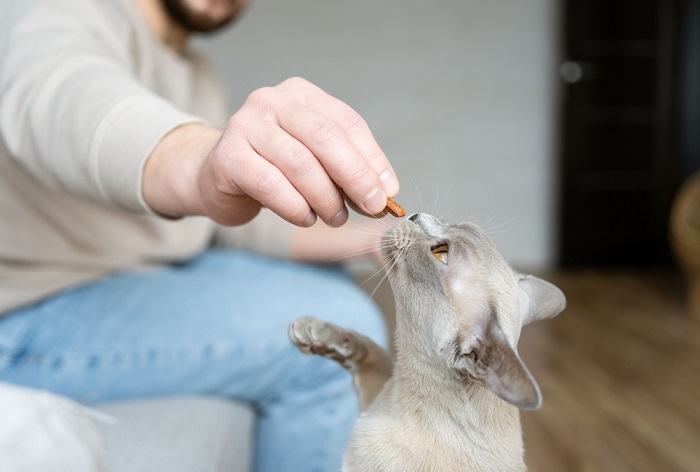
Cats are often drawn to the person who doles out something good to eat.
You can try and get your cat’s attention by offering tasty treats. This will work best with cats that are particularly motivated by food, but if you offer something high quality that your cat doesn’t usually get, chances are they will come running!
You can try things such as a tiny piece of cheese or freshly cooked fish or chicken. You can also buy commercial cat treats that many cats love. You might have to offer a few different things to find your cat’s favorite.
Remember, only ever feed your cat human foods that you know are safe. Some human foods are toxic to cats. If in doubt, ask your veterinarian for advice. Remember that as with any treat, moderation is key so only ever feed tiny amounts to prevent your cat from getting an upset tummy or from piling on the pounds!
Also Read: The 7 Best Calming Cat Treats
3. Talk to Your Cat
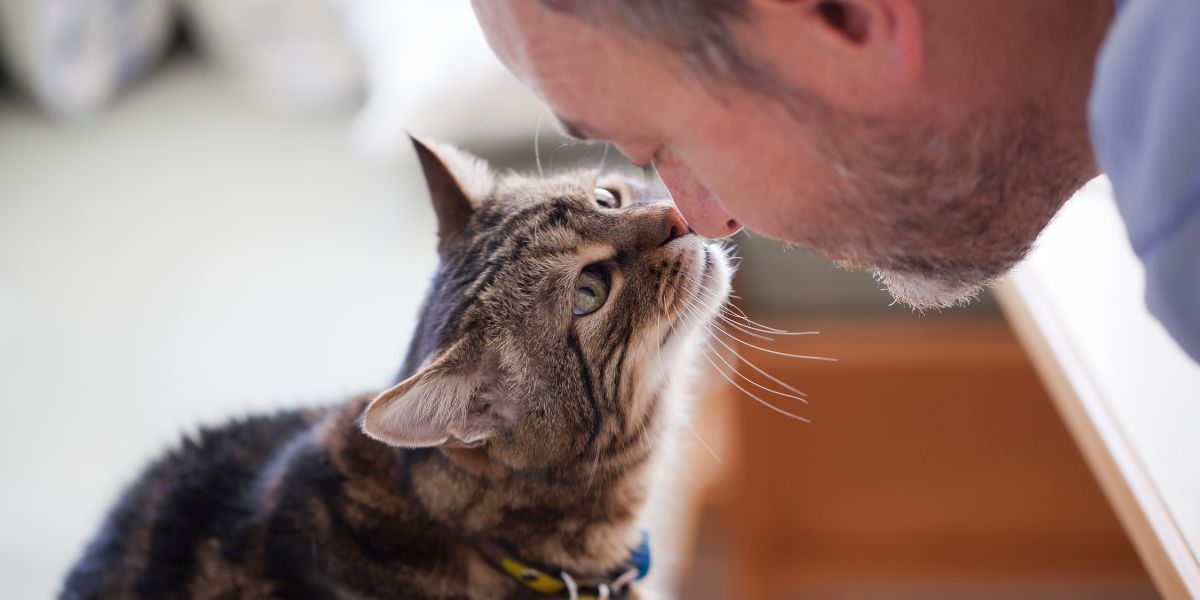
When you talk to your cat, the words don’t matter as much as your tone of voice.
Cats learn to recognize and trust the sound of their owner’s voice. Talking to your cat calming and in a reassuring voice is likely to encourage your cat to interact with you. Your cat will pick up on the comfort of your voice and how you are talking to them, so it doesn’t matter what you say, as long as you keep your voice level and calm.
You could try chatting to your cat about your day, your favorite soap, or even the weather! Who knows, your cat might even talk back with their own set of meows and purrs!
Also Read: How Cats Choose Their Favorite Person?
4. Offer Your Hand
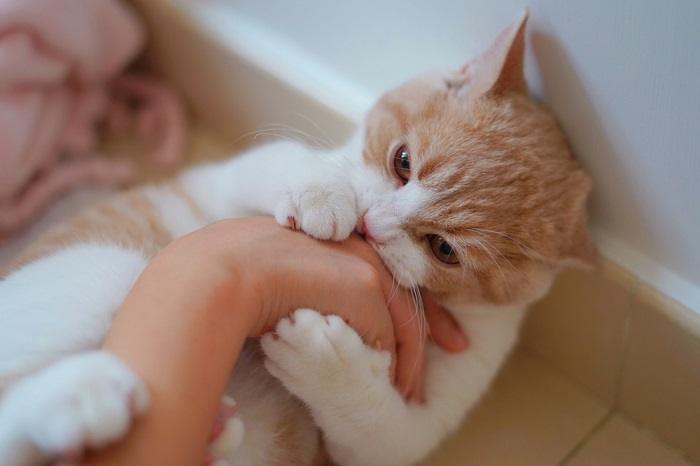
Though a nose nudge or rub is welcome, don’t allow your cat to get into the bad habit of biting your hands.
Some inquisitive cats will approach an outstretched hand in the hope of a chin rub or scratch behind the ears. Some cats are inadvertently taught this by their owners from a young age and will naturally approach you when you reach your hand out if they are in the mood for some attention. Sometimes it can help to make little kissy noises at the same time to spark your cat’s interest.
Also Read: Cat Love Bites: 5 Reasons Why They Do It & How To Respond
5. Initiate a Play Session
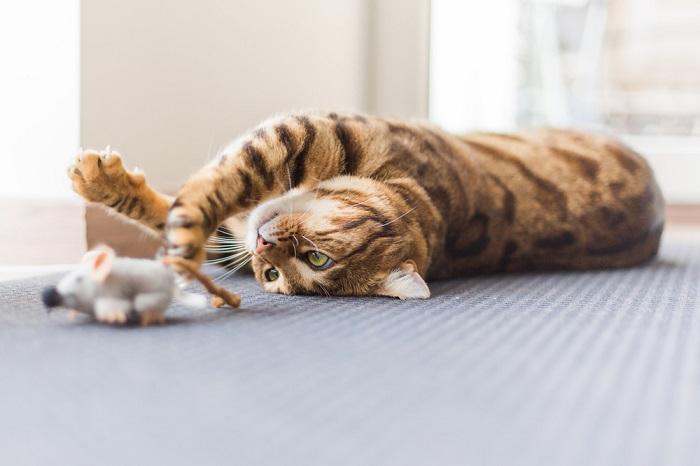
Playing with your cat is an excellent bonding opportunity and also provides exercise and mental stimulation.
Almost all cats love to play, it allows them to exhibit their natural hunting instincts as well as provide a bonding opportunity with their owners. Play is especially important if your cat is an indoor cat. Many cats will naturally be attracted to a feather teaser toy or wind-up mouse, even a small ball that they can bat. Bear in mind that your cat might not always be in the mood for a play session but if they are, initiating play with a toy is a surefire way to get their attention!
Also Read: How To Safely Play With A Cat, According To A Cat Behaviorist
6. Teach Your Cat a Word for Feeding Time
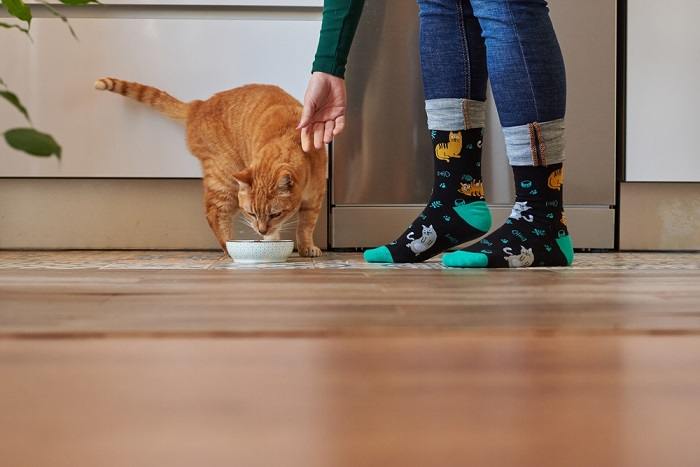
Pairing a special word or phrase with mealtimes is almost always guaranteed to get your cat’s attention.
You can try and teach your cat a word that they associate with being fed. Calling out a phrase such as “dinner time!” every time you feed your cat will quickly teach them that that word means food is on the way. This works best for cats that have routine meal times rather than those that graze throughout the day, but you could do the same thing when you offer a tasty treat.
This positive association is known as classical conditioning and can be a useful way to call your cat to you, particularly if you can’t find them. Soon, your cat will come running whenever they hear that special word!
Also Read: Do Cats Have A Sense Of Time?
7. Provide Catnip
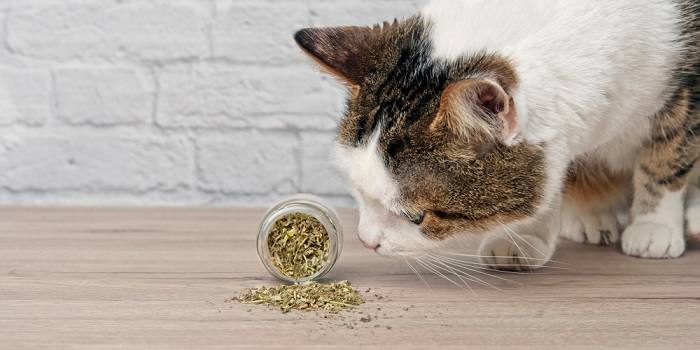
Not all cats react to catnip, but those that do experience an enjoyable euphoric “high.”
Many cats go crazy for this harmless herb. Bear in mind that not all cats are sensitive to its effects but those that are will experience a euphoric “high” and might become overly playful, or super calm and relaxed. Either way, if your cat can detect cat nip, chances are it’s a great way to get their attention.
Also Read: The 5 Best Catnip Products For Cats (Spray & Toys and More Surprises)
How To Keep a Cat’s Attention Once You’ve Got It
1. Pet Your Cat the Right Way

If you pet your cat the wrong way, they are not likely to return for more.
Most cats prefer to be petted around their head and cheeks and dislike having their stomach touched. Get to know your cat’s favorite places to be stroked and they are likely to enjoy your attention for much longer.
2. Groom Them
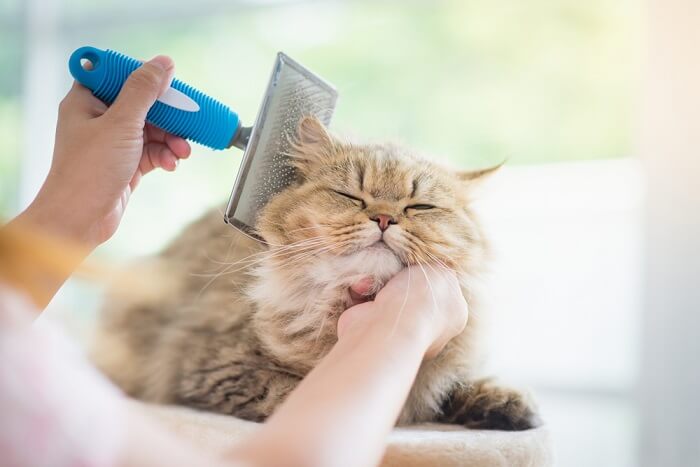
Like engaging in play, grooming your cat is a great way to build your bond.
Cats are meticulously clean animals and spend a large portion of their lives grooming themselves, but that’s not to say your cat won’t enjoy a grooming session from you, too. Many cats enjoy being brushed and not only does it help to keep their coat in tip-top condition, but it’s also an opportunity for you and your cat to bond.
Also Read: Best Cat Grooming And Deshedding Gloves
3. Make Playtime Fun

Try different types of toys to find the ones your cat likes best.
Keep playtime interesting and fun for your cat. Vary the types of toys you use to play with your cat and find out what they like best. Cats enjoy playing with toys that move and provide them the opportunity to “hunt” like they would with prey. If your cat enjoys your play sessions, they are more likely to play more frequently with you.
Also Read: The 12 Best Cat Toys: Keep Your Cat Fit And Happy With These Irresistible Toys
4. Try Teaching Her a Trick
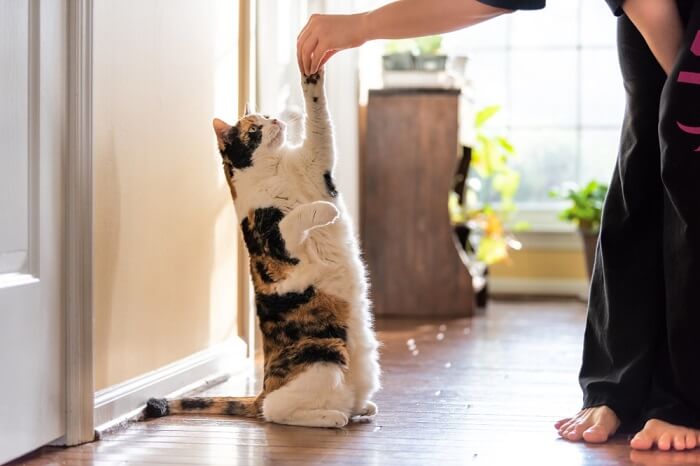
Believe it or not, most cats can be easily trained to perform simple tricks.
Cats are smart and can be trained just like dogs can. You can use a tasty treat as a reward. Your cat will enjoy interacting with you in this way and using their clever brain. Keep sessions short and never ever tell your cat off or use punishment for your cat for getting it wrong. If your cat enjoys learning, they might want to spend more time with you while you teach them.
Also Read: 5 Easy Tricks to Teach Your Cat According to a Cat Behaviorist
5. Know When To Stop
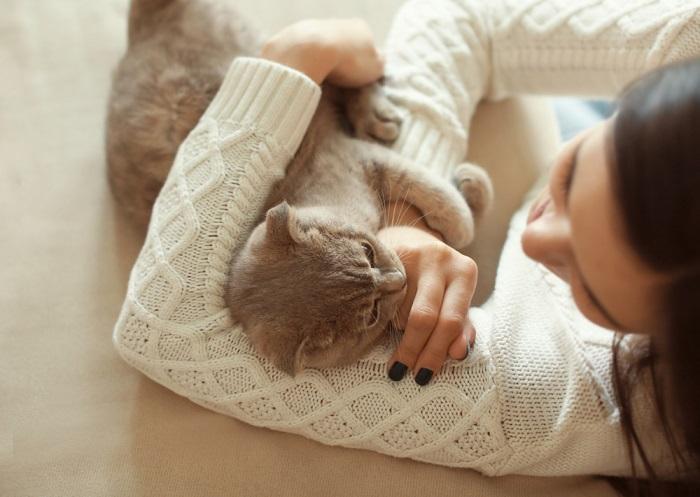
Be sure to stop petting and cuddling when your cat seems to have had enough.
The most important way to keep your cat’s attention is to know when to stop petting them. Most cats have a petting “threshold” and if they are petted too much or for too long, they can become overstimulated and frustrated. This can sometimes lead to aggression or your cat avoiding you.
Learn to read your cat’s body language as they will tell you when they are nearing their threshold and you can stop before it’s reached. Your cat will trust you more for it and is more likely to seek you out for attention in the future.
Also Read: Can You Discipline A Cat?
In Summary

Learning to read your cat’s moods can help maximize your connection.
Sometimes your cat will seek you out for attention without any cue from you but if you want to get your cat’s attention and keep it, then there are a few things you can try. Talk to them calmly, offer treats, and reward their attention by only petting them in places they enjoy being touched.
Never force your cat to interact with you and always allow them the opportunity to escape if they want. Pay attention to your cat’s behavior and they will let you know when they are the mood for some attention. Cats might not offer up attention quite as easily as dogs do, but this fact just makes it all the more rewarding and special when they do.
Also Read: Does My Cat Think I’m His Mom? The Answer Might Surprise You…
